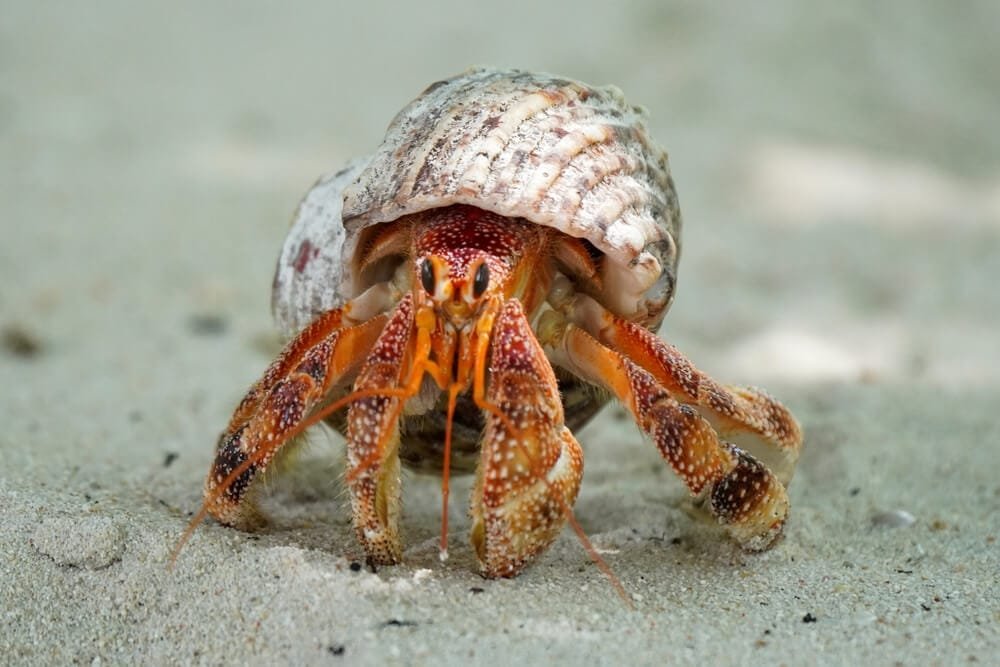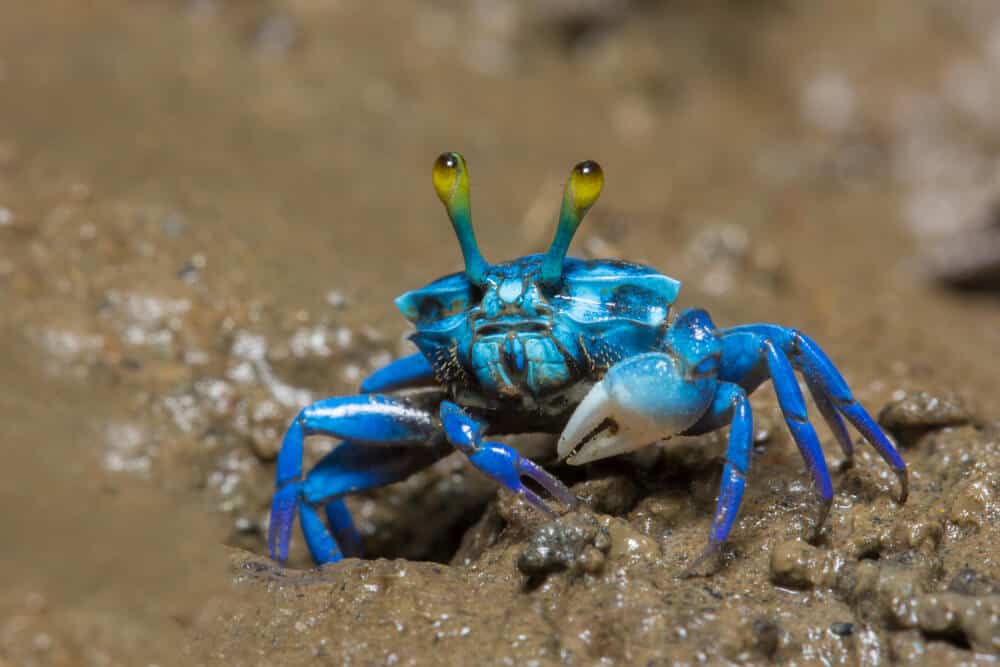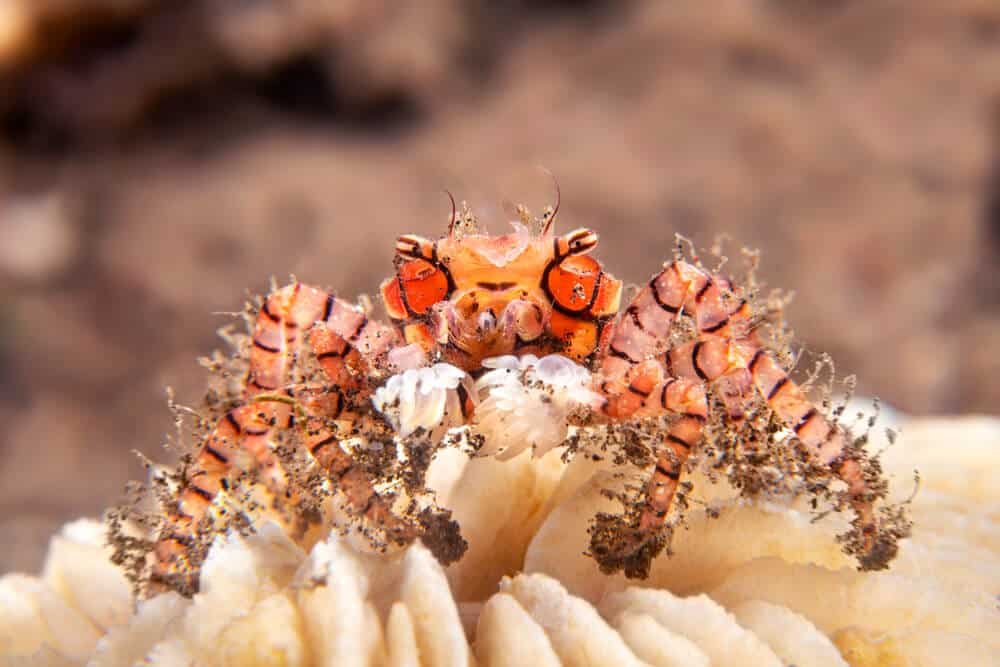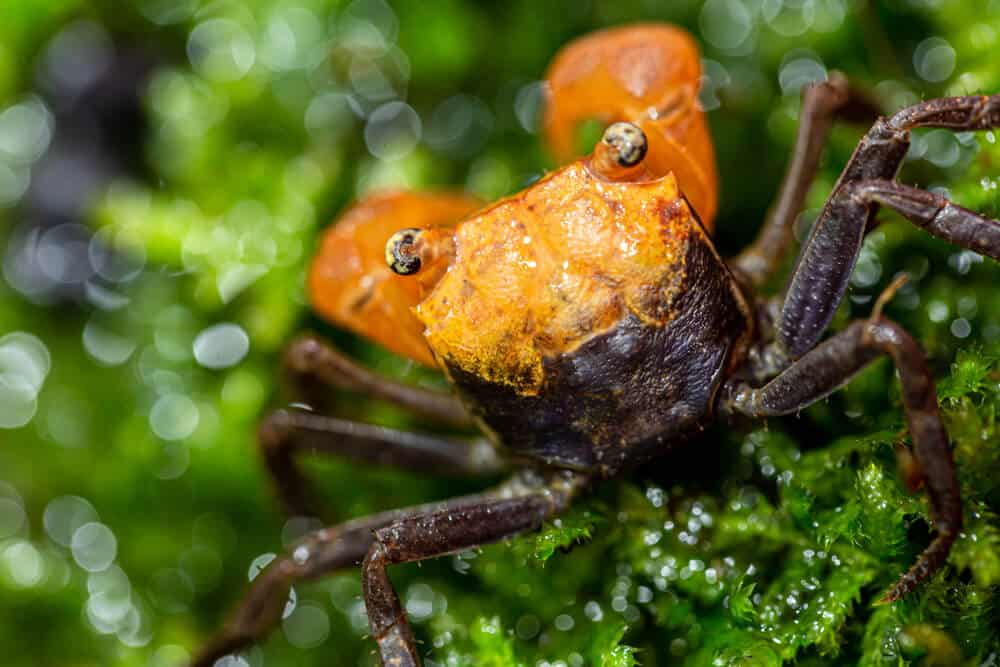What Do Vampire Crabs Eat?
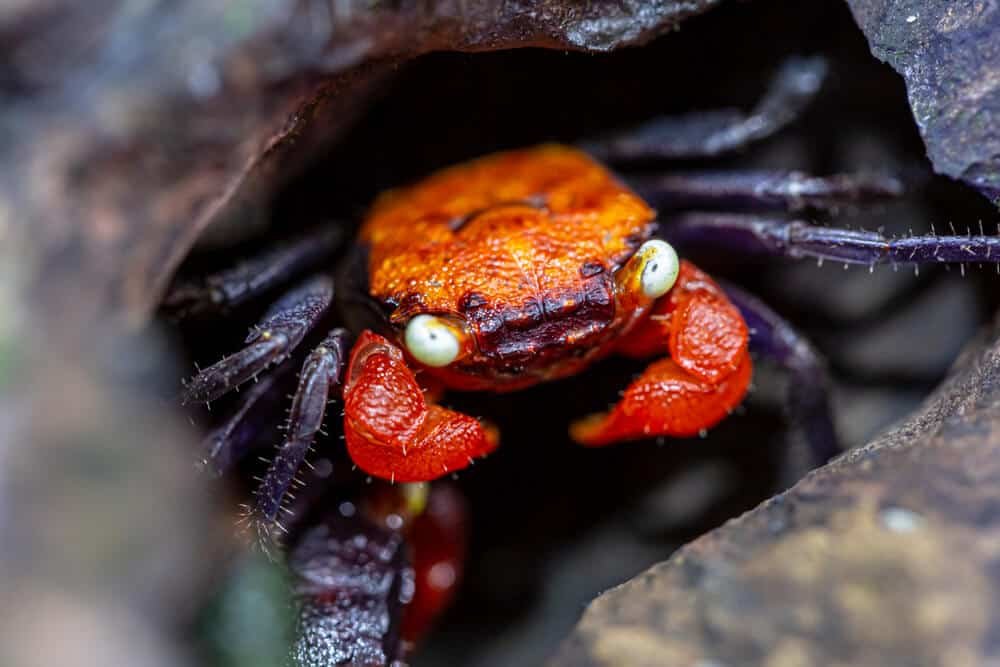
Vampire crabs are a fascinating addition to an aquarium because of their eye-catching and unique appearance.
As with any other pet, feeding a well-balanced diet to these crabs is essential in ensuring that they are happy and healthy.
What exactly do vampire crabs eat? They are omnivorous that will feed on a variety of diets including crustaceans and insects.
Let’s find out more about the feeding program of vampire crabs.
Natural Diet of Vampire Crabs
Vampire crabs originate from the swamps of Java and the surrounding islands of Indonesia where they live in mangrove forests.
Their natural habitat is freshwater streams, but they can also live in brackish water environments.
In the wild, vampire crabs are omnivorous and will feed on plant debris that falls into water, crustaceans, and small insects. Their natural diet includes ants, mosquitoes, flies, shrimps, and leaves of plants.
They will forage for food such as bananas and mangoes by climbing trees surrounding bodies of water.
Vampire crabs require a balanced diet to live a healthy life. They require protein and carbohydrates for growth and energy. They acquire these nutrients from varied diets from the environment.
If you are breeding vampire crabs in captivity, you will need to provide a balanced diet that will cater to their nutrient needs fully.
Commercially Available Foods for Vampire Crabs
Even though the natural diet of vampire crabs includes small insects and crustaceans, crabs can also be fed commercially available foods.
Pelleted foods
Pelleted foods are a great option for feeding crabs in captivity. These are formulated foods that provide fortified minerals and vitamins for crabs.
They are well-balanced to support the nutritional needs of the crabs. You will enjoy the convenience that comes with pellets because they are easy to use and stored.
They are great for an aquarium since they do not pollute the water as easily as other kinds of foods.
Pellets are available in various pet stores where you can find various brands.
For instance, Hikari crab cuisine is a popular pellet that has a balanced formula of shrimp meal, seaweed, spirulina, and krill.
When feeding pellet foods to vampire crabs, you should follow the recommended feeding instructions on the packaging.
This helps you to avoid overfeeding or underfeeding. Overfeeding usually results in water pollution which could have adverse effects on the crabs.
Freeze-Dried Foods
This is another great option for nourishing vampire crabs. They are highly recommended because of the high protein content in them which is critical for a balanced diet.
Aquarists use it as an occasional treat for the crabs.
Although they are usually sold when dried, you can also rehydrate them by soaking them in the water a few minutes before feeding.
Algae Wafers
Algae wafers are a great source of fiber for vampire crabs. As their name suggests, they are made from algae and other plant-based ingredients.
Fresh Vegetables
You can also feed your crabs fresh vegetables such as carrots, zucchini, and spinach. These are high in fiber and provide essential nutrients to your crabs.
Before feeding them to crabs, ensure that you blanch them first for easier digestion.
Fresh or Frozen Foods
Frozen foods such as krill, shrimp, and small pieces of chicken or fish can also be fed to the crabs as a source of protein. Before feeding, ensure that you’ve cut them into small pieces.

Feeding Frequency and Portion Sizes
Overfeeding vampire crabs can cause pollution in the water tank since they might not finish all the food that you put in the tank. Therefore, it is critical to understand feeding patterns and sizes.
Factors Affecting Feeding Frequency
The number of feeds that you offer your vampire crabs will depend on several factors such as activity level, size, age, and metabolism.
Younger crabs have a high metabolism and will require frequent feeding when compared to adult crabs. The same case applies to active crabs which require more frequent feeding.
The type of food that you offer the crabs will also determine how often they will be fed.
For instance, foods rich in proteins such as shrimps do not require frequent feeding as plant-based.
Recommended Feeding Schedule for Vampire Crabs
Crabs should be fed once a day since it avoids overfeeding and underfeeding. If you notice any leftover food in the tank, you can reduce portion sizes and feeding frequency.
Large meals at uneven intervals are not recommended and instead, it is better to feed them small portions at steady intervals.
Feeding Tips and Best Practices
For best feeding practices, follow the following tips.
Offer a Variety of Foods
The first thumb rule is to offer a variety of foods to your vampire crabs. Since they are omnivorous mix animal and plant-based foods to meet the right nutritional requirements.
A varied diet prevents common deficiencies and keeps crabs healthy. However, be creative enough and offer foods that are interesting for your crabs.
Remove Uneaten Food Promptly
To maintain good food quality, always remove uneaten food promptly. Uneaten food can decompose quickly and cause nitrate and ammonia levels in the water to rise significantly.
These are toxic to the crabs and might cause diseases. You can use a siphon to remove this food at the bottom of the aquarium.
Supplement with Calcium and Other Nutrients
Supplementing your crabs’ food with other nutrients such as calcium is important in promoting the overall health and shell development of the crabs.
A multivitamin supplement can also be a great way of ensuring that all the nutritional needs of the crabs are met fully.
Final Thoughts
The unique dietary needs of the vampire crabs can easily be met by combining plant-based and animal-based foods.
A varied diet for the crabs ensures that they thrive well without any deficiencies.
In addition to providing a balanced diet to the crabs, it is also critical to properly care for them by providing optimal tank requirements.
The tank should always be clean with proper lighting and temperature conditions.
Overall, vampire crabs are easy to care for and if you are keen to meet the basic requirements you can have healthy and happy crabs.
